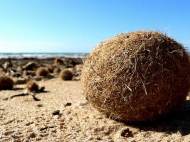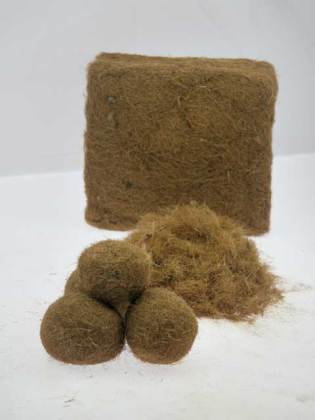Turning seaweed into insulation in construction
 While seaweed has many uses, ranging from direct use in dishes or as food supplements, fertilizer or biodiesel resource, most of us find washed-up seaweed nothing more than nuisance on the beach. Researchers at the Fraunhofer Institute found a way to utilize specie of seaweed common in the Mediterranean Sea by using it as insulation in construction.
While seaweed has many uses, ranging from direct use in dishes or as food supplements, fertilizer or biodiesel resource, most of us find washed-up seaweed nothing more than nuisance on the beach. Researchers at the Fraunhofer Institute found a way to utilize specie of seaweed common in the Mediterranean Sea by using it as insulation in construction.
Throughout fall, winter and spring, Mediterranean beaches are littered with seaweed leaves from the Posidonia oceanica plant, more commonly known as Neptune grass. Although the natural material of the Neptune grass is regarded as waste, this readily abundant material has a variety of characteristics that make it useful in construction. Neptune grass seaweed is virtually non-flammable, resistant to mold, and it can be used as insulating material without the need for chemical additives.
Since this seaweed form balls similar to tumbleweed, individual fibers tend to catch easily on anything including one another and are quick to form a new bundle. That complicates sand removal, as well as procedures when it is processed or blown as insulation.
Researchers at the Fraunhofer Institute for Chemical Technology (Fraunhofer ICT) found that shaking is the best way to remove the sand from the clumps of seaweed. After carefully breaking up the clumps, a conveyor belt delivers them to the cutting mills which cut Neptune grass into 1.5 to 2 cm (0.6 to 0.787 inches) fibers. The entire manufacturing process requires very little energy. Neptune grasses are harvested by hand and brought to Germany by sea from Tunisia and by road from Albania.
It can be used as insulation between the rafters of pitched roofs, to insulate interior walls, or to reduce the amount of heat lost through building envelopes. Fibers act as a buffer, absorbing water vapor and releasing it again without impairing its own ability to keep the building insulated. And with a salt content of just 0.5 to 2 percent, Neptune grass can be used to produce insulation material that will not rot away.
According to tests at Fraunhofer Institute for Building Physics (Fraunhofer IBP), the insulating material created from seaweed can hold 20 percent more energy than higher than wood or wood products. Figures released by the eco-INSTITUTE in Cologne revealed that seaweed is 100 percent organic and entirely free of toxic matter, making it also particularly suitable for allergy sufferers.
The fibrous material can be filled into the hollow spaces of roof constructions, walls and ceilings, and then packed tight by hand. It is advisable to use a machine to blow insulation into hard-to-reach spaces. The researchers also developed a special blower which ensures that every last nook and cranny are filled.
The company NeptuTherm e.K. (website in German language) has given its name to this insulating material and is already marketing and distributing it. Fraunhofer ICT researchers plan to develop solid, ecologically-sound sheets made from this material in order to widen the application span of the material to insulation for roofs, exterior façades, interior walls and basement ceilings.










Leave your response!